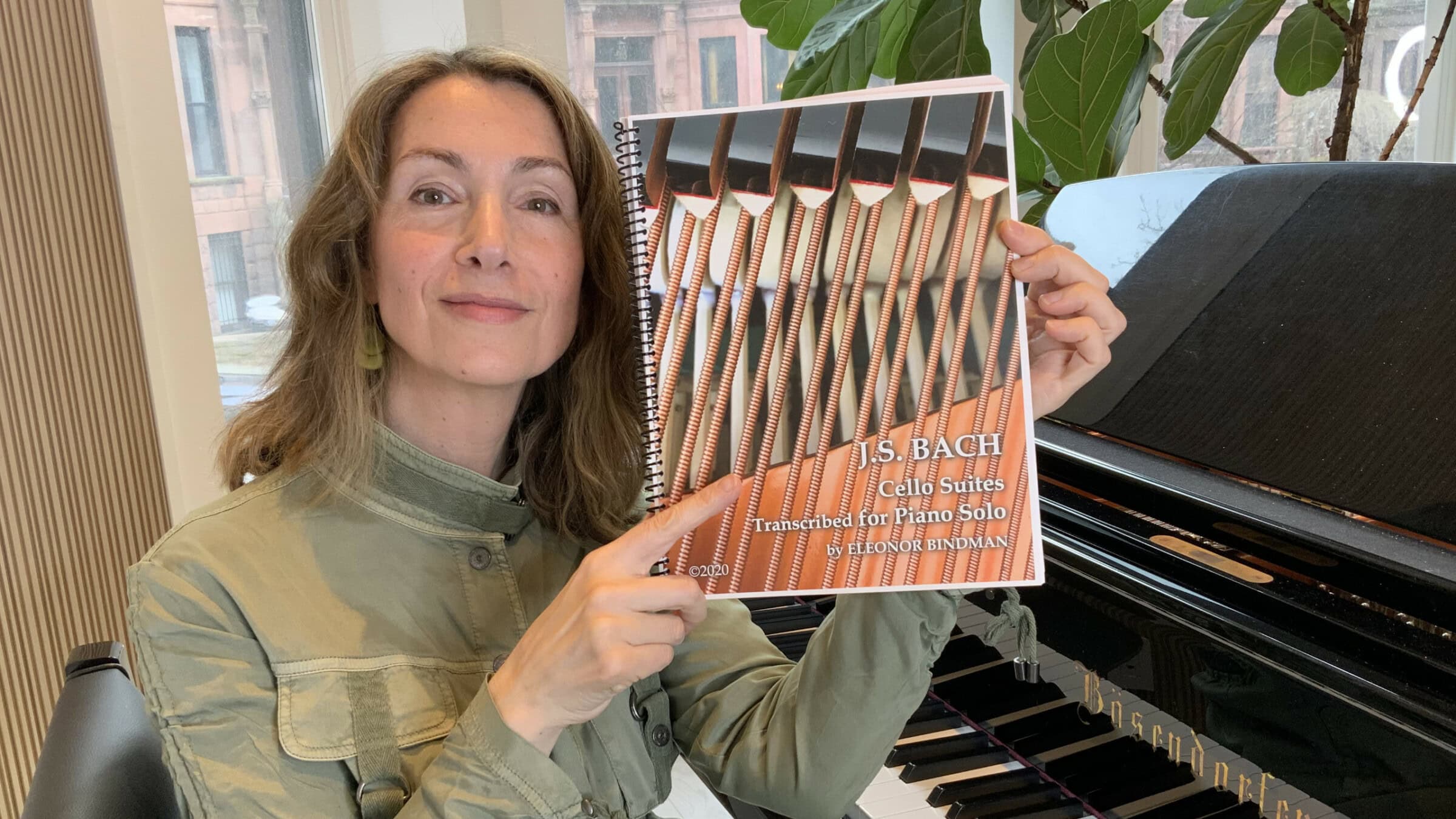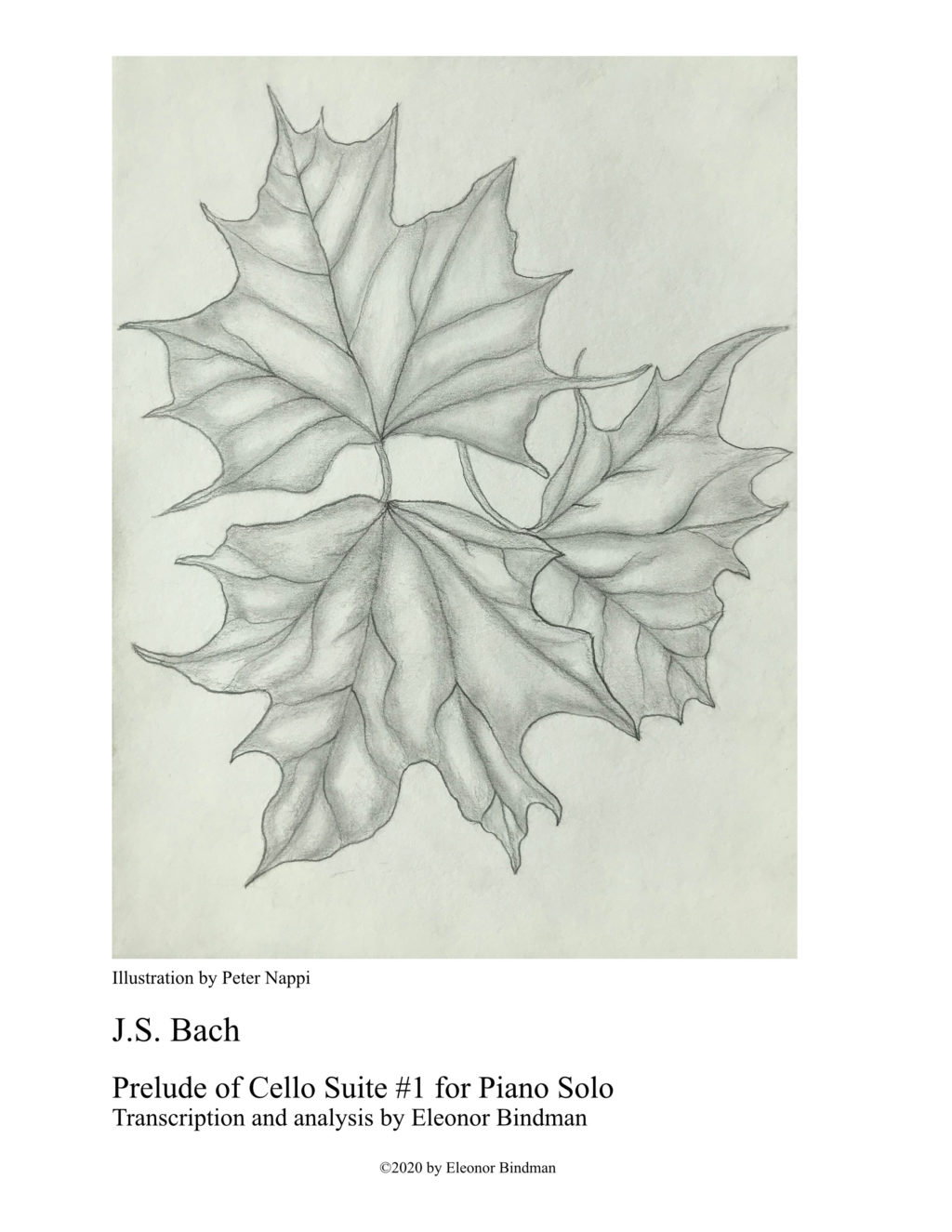Suite No. 1 is well-grounded in the key of G major, starting with an open tonic chord of G, the D a fifth above and a B a 10th above. Bach unifies this Suite by planting this chord, a compositional seed of sorts, in each of the six movements and continues to use a similar common feature in Suites 2 and 3. The calm and beneficent quality of G major coupled with the “seminal” approach created in me a strong association with growth, nature as a source and healer of all things, and the color green.
The beginning four measures of the familiar Prelude flow in 16th notes and spell out a harmonic progression of chords, just like the four incipient measures in Prelude No. 1 of The Well-Tempered Clavier, another iconic “instrumental study set” of Bach’s. However, here we are immediately faced with an element of instability within structure, the wavering BAB (or CBC) pattern, which becomes a source of variety and departure, making this Prelude longer and more interesting. You can see the three-note fragments (BAB, GF#G etc.) descend and lead into a new bass note in m. 5 (C#, the first accidental and leading tone of D major) and then lengthen into trills in m. 6. Measures 7-8 use already established patterns and in mm. 9-10 scale-wise motion and an arpeggio bit in the dominant key of D major end the “exposition” section.
In mm. 11 and 13 diminished harmonies slightly disrupt the emotional stability but resolve promptly in mm. 12/14. Measure 15 is already familiar. Then Bach inserts the first dramatic ascent by means of a pedal point based on G in mm. 16-18 which culminates in m. 19 – a new iteration of the initial chord – only to roll back into the C# to C (mm. 20-21) bass anchoring the Dominant chord statement in m. 22. The first half of m. 22 is an interesting blend of a D7 chord with an ascending D major scale and the unexpected C# causes a naturally expressive “stretch” of time and space before the arrival at the highest D where Bach puts a fermata. He wants us to pause midway through the piece, to interrupt the hitherto perpetual motion and take a breath. I took the liberty of inserting a 16th rest here instead of a tied 16th note after the fermata as we find in the manuscripts. A rest is a more logical notation of the concept and produces less “cognitive dissonance.”
After the fermata through m. 28 the Prelude ascends and descends, occasionally stumbling into an Eb, Bb, G# and highlighting friction between flats/naturals and sharps/naturals of the same scale degrees. In mm. 29-30 Bach writes out an almost pedantic downward scale sequence before very intentionally dividing the single
line into two voices, one settling on the A (secondary dominant) and the other meandering around that A for six measures. That A is a separate, open string on the cello but a pianist has to struggle for clarity when the voices share it – one solution is to experiment with transposing the repeated A into a lower register, either fully or partially, as I opted to do on my recording of this transcription. In mm. 37-38 the voices move to D (dominant) and a steadily ascending chromatic scale which finally bring us back to G major for the home stretch. Measures 39-41 are now further divided into three-voice chords but, unlike the beginning, there is no wavering anymore as we reach the last chord.
A tempo commonly heard for this Prelude is around 72 per quarter. Fluctuations are possible in transitional, more improvisatory passages but the broken chords need to remain steady. The dynamic level is generally mf but any harmonic or directional changes hold potential for subtle variety. The effect of repeating the same fragment as a softer “echo” may work in some instances (I like it in mm. 8 and 20) but it’s better not to overindulge in that. And at the end, since the motion struggles upward and the energy increases, a crescendo makes sense.
I hope that you will enjoy playing this lovely Prelude. Perhaps you will also be inspired to try more of the 35 other Cello Suites for Piano movements, including the less-known but equally wonderful Prelude to Suite 4 which works extremely well on the piano, the soulful Sarabandes and the playful dances.

